You are here: Foswiki>Dmi Web>WinterSchool2017>WinterSchool2017ProjectPages>WinterSchool2017BeyondTheBubbleLikes (19 Jan 2017, ZoëVersteegen)Edit Attach
Common Ground
Page like network on Facebook This project is one part of the larger Winter School 2017 study Beyond the bubble? Exploring the 2016 US election echo chambersTeam Members
Christine Cheng and Zoë Versteegen.Contents
Summary of Key Findings
Briefly describe your most significant findings.1. Introduction
The 2016 U.S. election revealed the phenomenon of Trump filter bubble, and the binary between liberal and conservative polarization. We research this phenomenon by looking at extreme right and left pages on Facebook and examine their page like network through Netvizz. By ding so, we want to discover if there are any common pages liked by both of the sides, and to what extend their filter bubbles overlap. Who will reach out the most?2. Initial Data Sets
Dataset of the WSJ Blue Feed, Red Feed sources, like page network provided by Netvizz and the Gephi network made out of this data.3. Research Questions
What happens when we turn filter bubble research around? Instead of enclosures, can we find shared interests that can act as common ground for conversation?4. Methodology
- Access WSJ Blue Feed, Red Feed sources for the most extreme right and left Facebook-pages.
- Use netvizz to discover like network (depth=1) of each of these pages.
- Use Gephi to explore network of like bubbles and common ground.
- Use fake Facebook account to see the Common Ground Feed.
- Make an App ID for creating a common newsfeed: Purplefeed, comparable by WSJ Blue Feed, Red Feed.
5. Findings
Netvizz visualizations: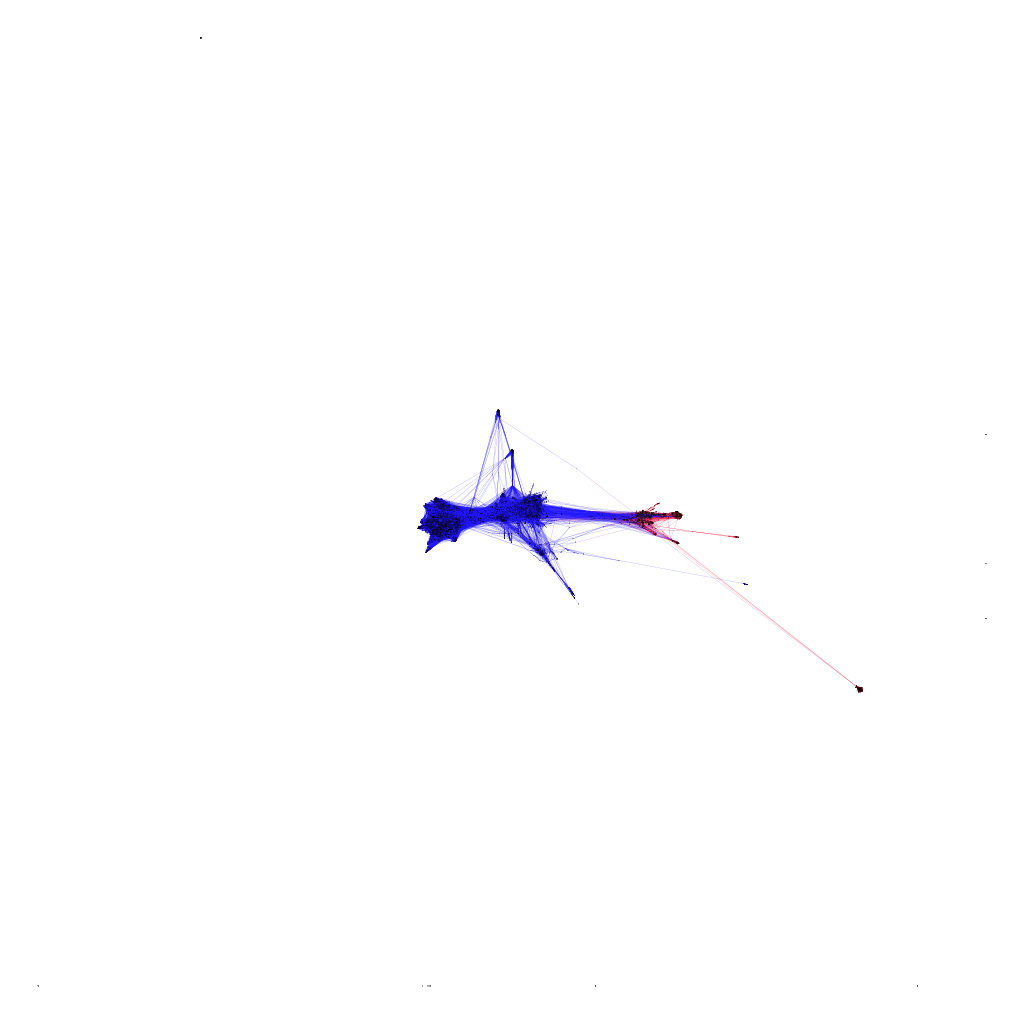 Blue = liberal (75,82%), red = conservative (24,18%)
Blue = liberal (75,82%), red = conservative (24,18%)
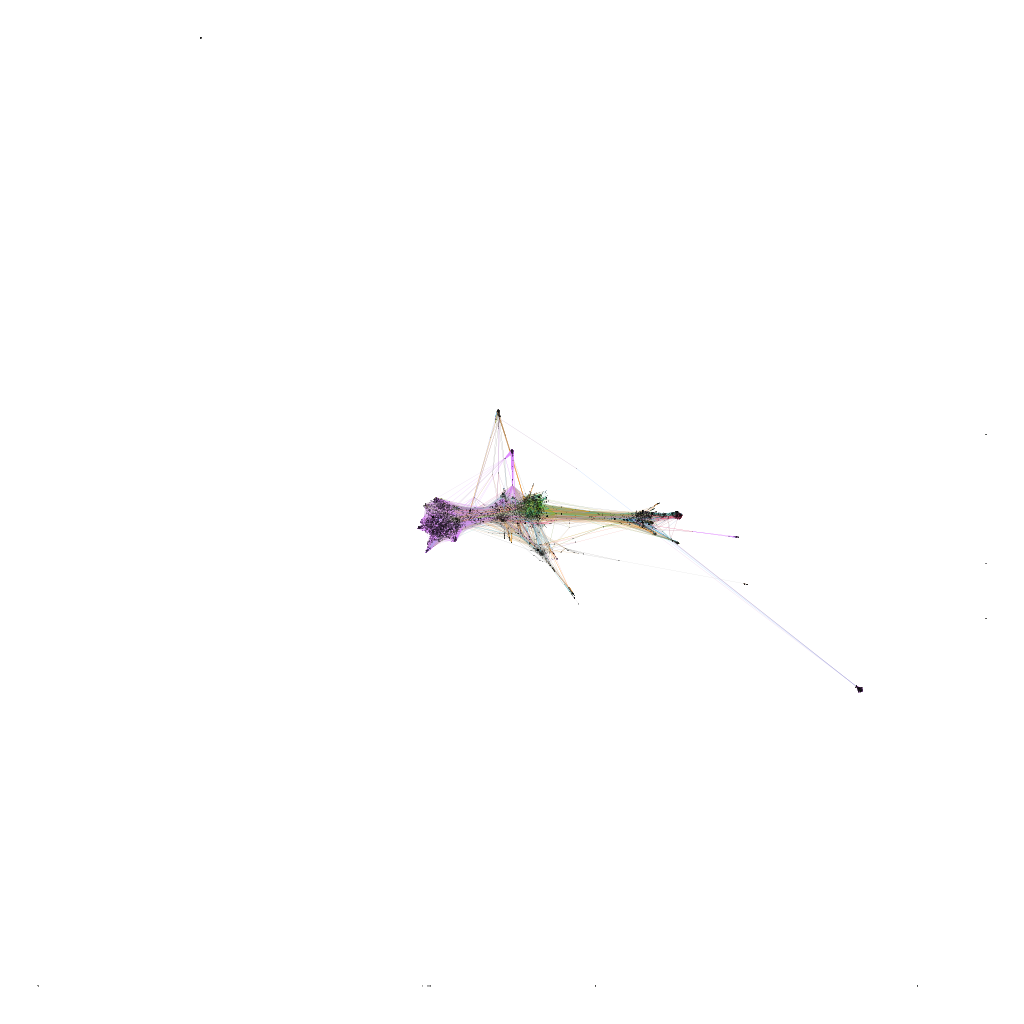
-
= Non-profit organisation (34,24%)
-
= Community (10,24%)
-
= Public figure (4,82%)
-
= Media/news (4,29%)
-
= News/media (3,94%)
-
= Government (3,14%)
-
= Political organisation (3,13%)
- Others (41,02%)
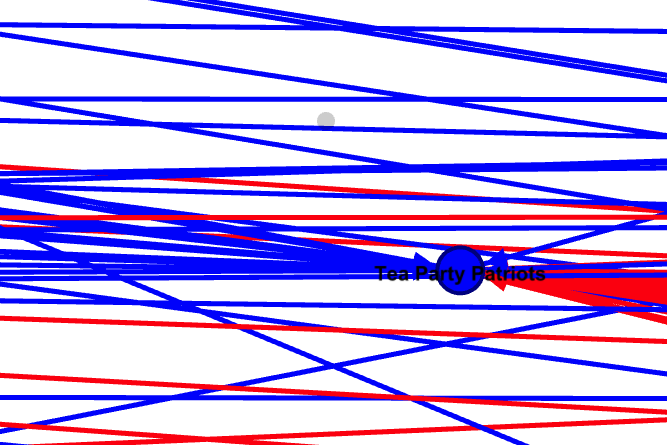 Pages liked by our fake account:
Pages liked by our fake account:
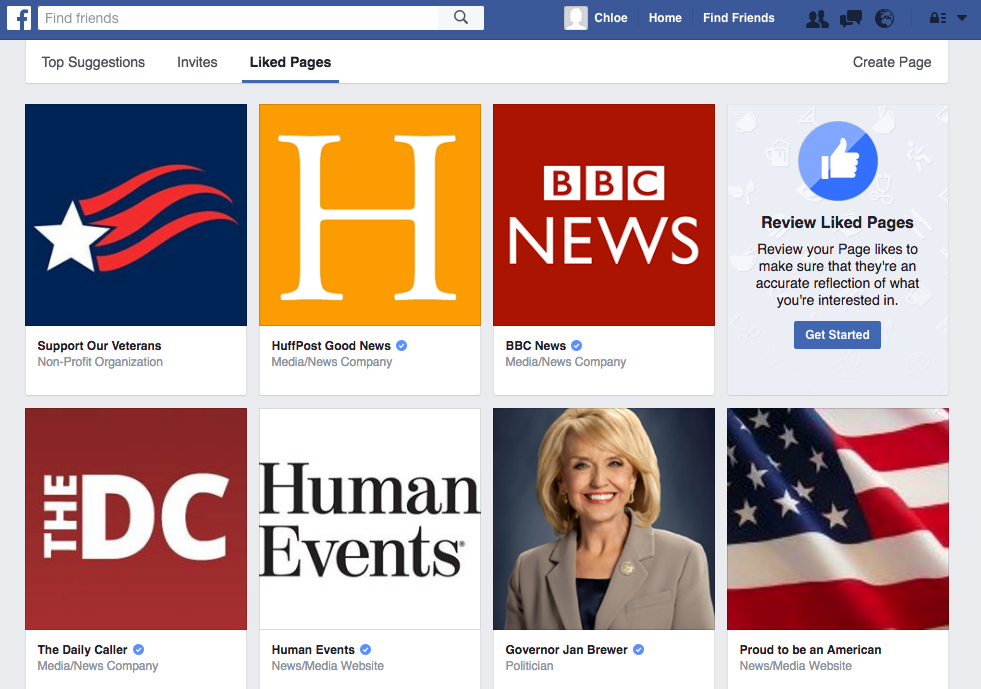 Facebook recommends us to like the page: USA For Trump:
Facebook recommends us to like the page: USA For Trump:
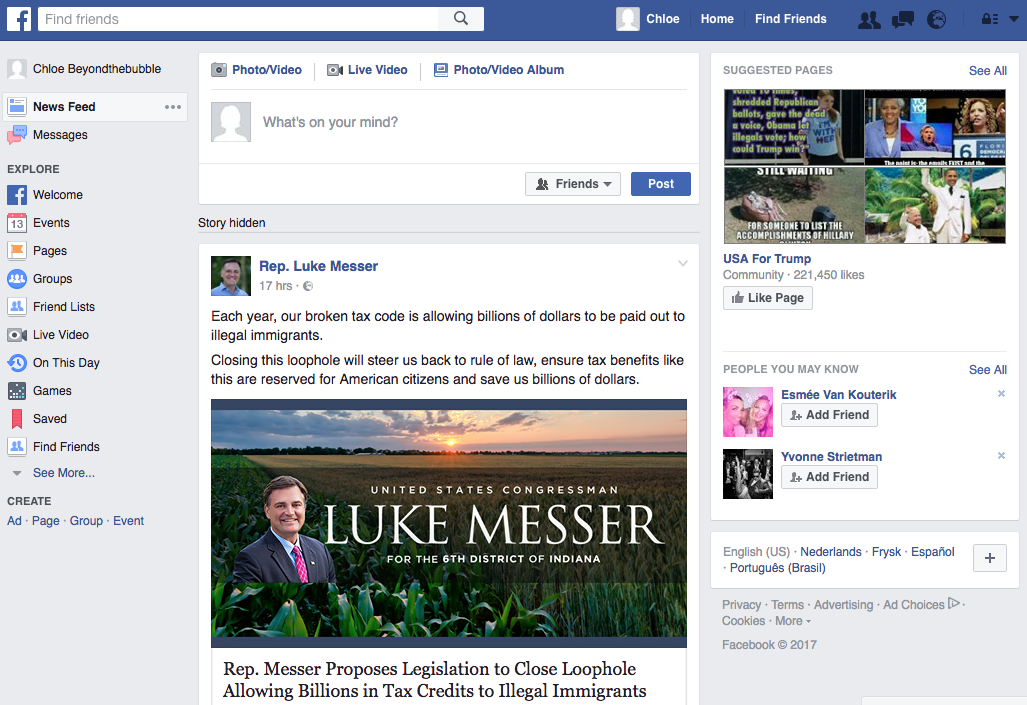 Simular interestes found on common liked pages:
Simular interestes found on common liked pages:
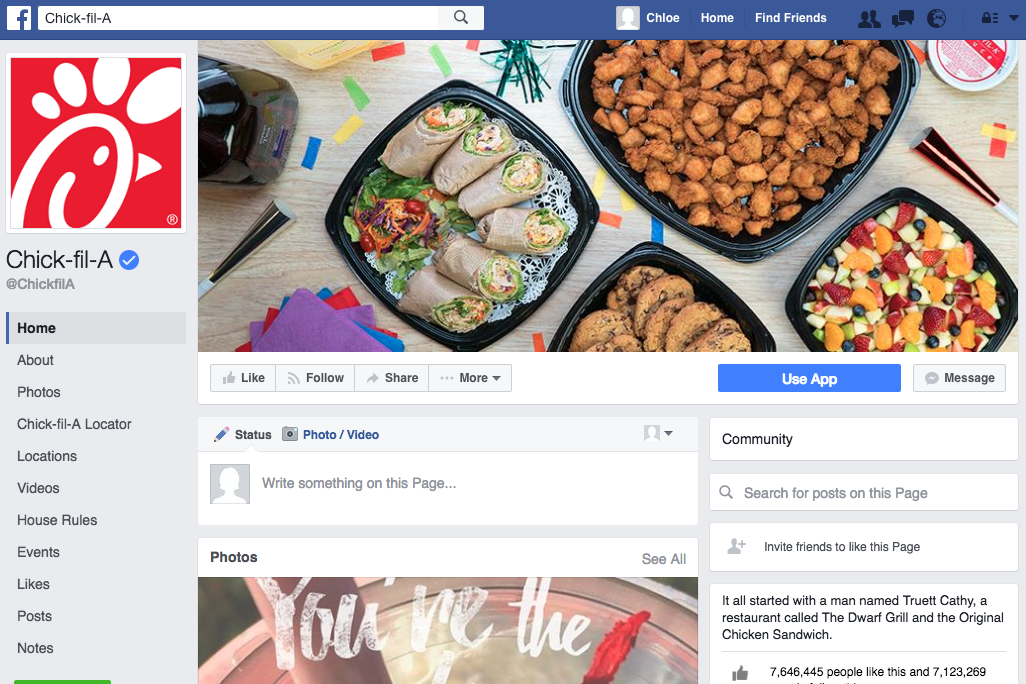
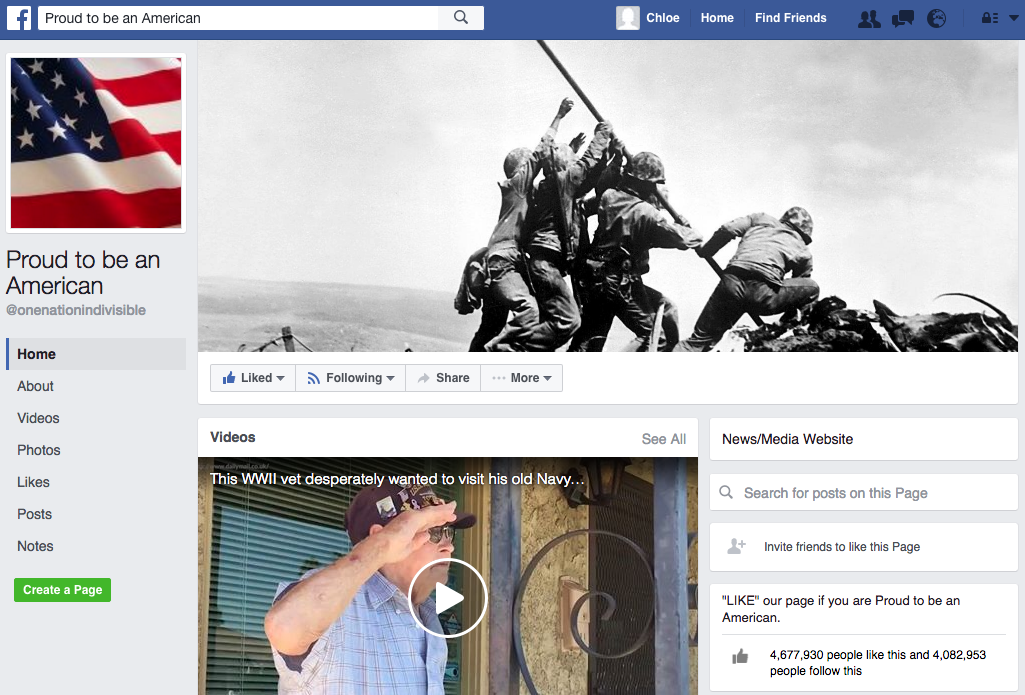 Purplefeed (http://web.digitalmethods.net/purplefeed/):
Purplefeed (http://web.digitalmethods.net/purplefeed/):
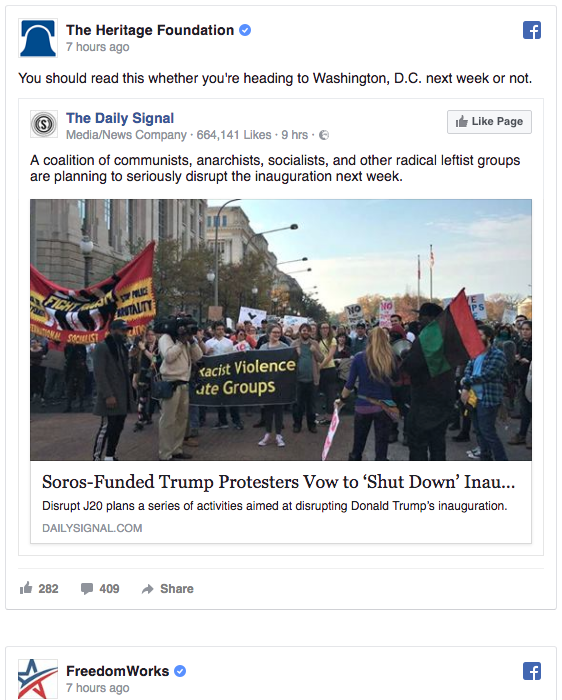
6. Discussion
- The blue feed likes more right-leaning pages and the red feed tends to stay in its own filter bubble.
-
Common Ground:
- Republican figures; Rand Paul, Donald Trump.
- Popular news websites, newspapers or magazines.
- Public figures; Bamboo Bob.
- Non-profit organisations.
- Exceptions: Chick-fill-A, Digital bible, Proud to be an American, Girls just wanna have guns.
- The web app: what polarises online polarization effect
7. Conclusions
We asked ourselves the question: Which party is making an effort of being exposed? And therefore where are the holes of this bubble and where does it come from? The filter bubble is most visible on the red wing. Only the blue wings is reaching out to the other party. It is outstanding that almost all the common liked pages are right-sided. Overall, there are little common interests which do not go further than a chicken-sandwich or the fact that both partys are proud to be an American.8. References
List your references in a standard academic bibliographic format.Edit | Attach | Print version | History: r3 < r2 < r1 | Backlinks | View wiki text | Edit wiki text | More topic actions
Topic revision: r3 - 19 Jan 2017, ZoëVersteegen
 Copyright © by the contributing authors. All material on this collaboration platform is the property of the contributing authors.
Copyright © by the contributing authors. All material on this collaboration platform is the property of the contributing authors. Ideas, requests, problems regarding Foswiki? Send feedback


